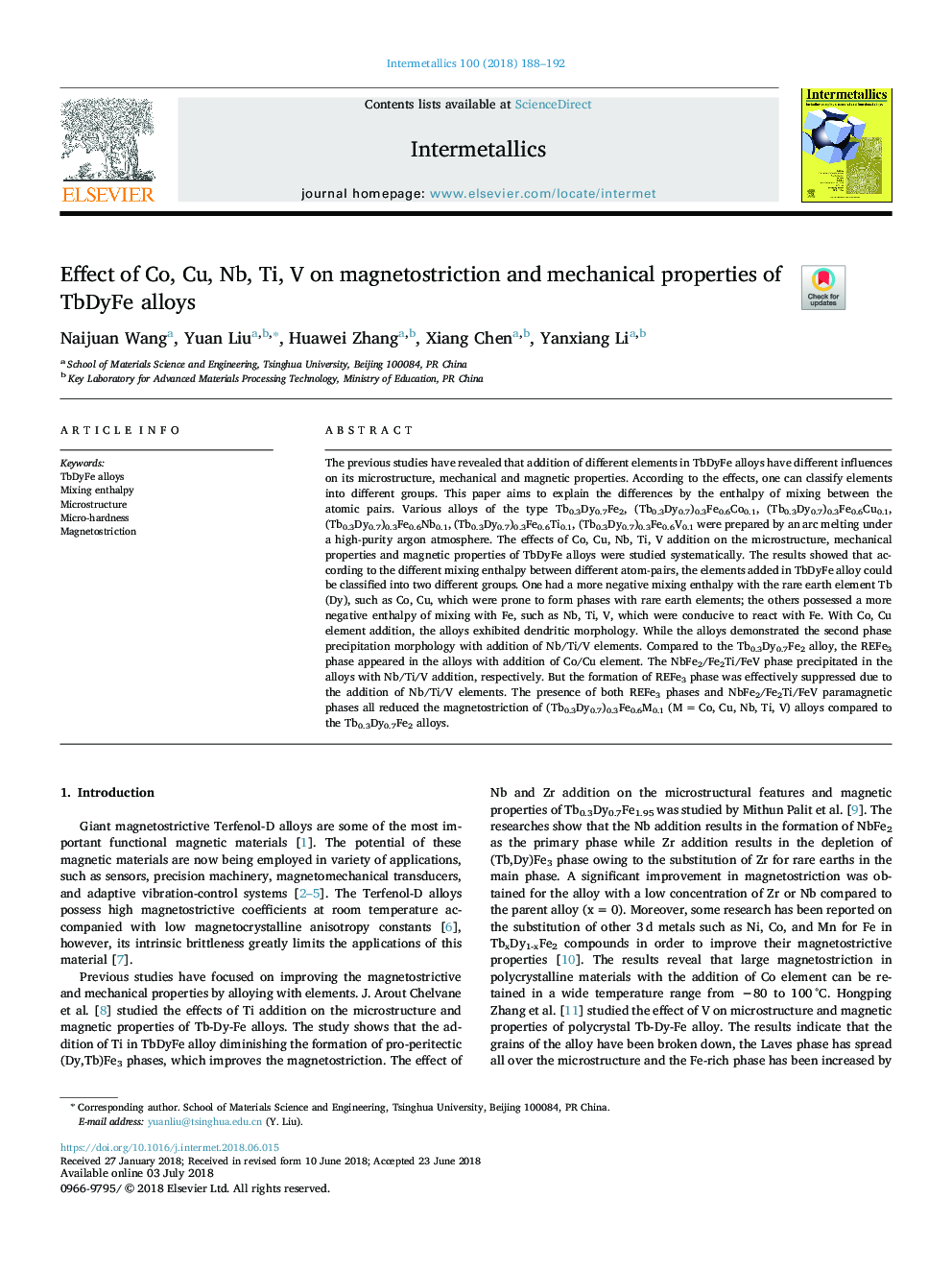| Article ID | Journal | Published Year | Pages | File Type |
|---|---|---|---|---|
| 7988245 | Intermetallics | 2018 | 5 Pages |
Abstract
The previous studies have revealed that addition of different elements in TbDyFe alloys have different influences on its microstructure, mechanical and magnetic properties. According to the effects, one can classify elements into different groups. This paper aims to explain the differences by the enthalpy of mixing between the atomic pairs. Various alloys of the type Tb0.3Dy0.7Fe2, (Tb0.3Dy0.7)0.3Fe0.6Co0.1, (Tb0.3Dy0.7)0.3Fe0.6Cu0.1, (Tb0.3Dy0.7)0.3Fe0.6Nb0.1, (Tb0.3Dy0.7)0.3Fe0.6Ti0.1, (Tb0.3Dy0.7)0.3Fe0.6V0.1 were prepared by an arc melting under a high-purity argon atmosphere. The effects of Co, Cu, Nb, Ti, V addition on the microstructure, mechanical properties and magnetic properties of TbDyFe alloys were studied systematically. The results showed that according to the different mixing enthalpy between different atom-pairs, the elements added in TbDyFe alloy could be classified into two different groups. One had a more negative mixing enthalpy with the rare earth element Tb(Dy), such as Co, Cu, which were prone to form phases with rare earth elements; the others possessed a more negative enthalpy of mixing with Fe, such as Nb, Ti, V, which were conducive to react with Fe. With Co, Cu element addition, the alloys exhibited dendritic morphology. While the alloys demonstrated the second phase precipitation morphology with addition of Nb/Ti/V elements. Compared to the Tb0.3Dy0.7Fe2 alloy, the REFe3 phase appeared in the alloys with addition of Co/Cu element. The NbFe2/Fe2Ti/FeV phase precipitated in the alloys with Nb/Ti/V addition, respectively. But the formation of REFe3 phase was effectively suppressed due to the addition of Nb/Ti/V elements. The presence of both REFe3 phases and NbFe2/Fe2Ti/FeV paramagnetic phases all reduced the magnetostriction of (Tb0.3Dy0.7)0.3Fe0.6M0.1 (Mâ¯=â¯Co, Cu, Nb, Ti, V) alloys compared to the Tb0.3Dy0.7Fe2 alloys.
Related Topics
Physical Sciences and Engineering
Materials Science
Metals and Alloys
Authors
Naijuan Wang, Yuan Liu, Huawei Zhang, Xiang Chen, Yanxiang Li,
